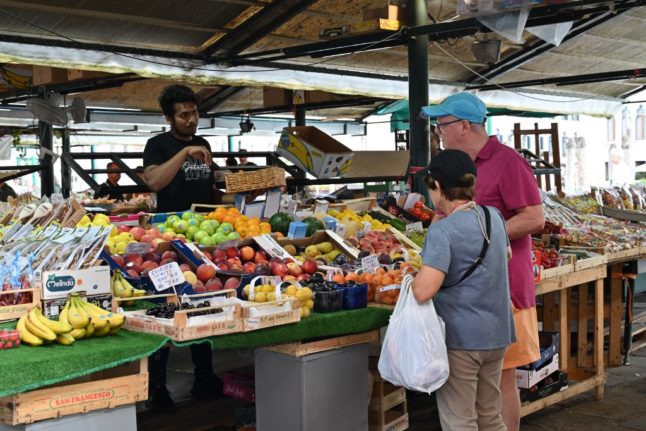As summer in Italy draws to a close, families are set to pay an extra 1,601 euros in living expenses over the coming autumn months.
That’s according to a new study carried out by Italian consumer watchdog Assoutenti.
The research focusses on five items that will further pinch the Italian household budget: food, school, mortgages, petrol and eating out.
“Food costs 10.7 percent more than last year, increasing the expenditure on food and drinks of a typical family in the September-December period by a good 205 euros compared to the same period in 2022,” found the association.
As schools reopen their doors in September, families with school-age children should expect to fork out more for stationery products. These are set to increase by an average of 9.2 per cent year-on-year, due to higher raw material prices and higher production costs.
READ ALSO: EXPLAINED: Why doesn’t Italy have a minimum wage?
This means an increase of 50 euros compared to 2022 for supplies, while books are expected to rise by 45 euros on average.
It will also be more expensive to travel by car. With current fuel prices, the cost of filling up at the pump is forecast to rise in the last four months of 2023 by a total of 103 euros per household.
It’s not good news for those paying a mortgage either.
The European Central Bank has already predicted interest rate increases over the last quarter of the year, putting further strain on mortgage payers.
“Assuming an adjustment of the rates by 0.25 percent in the upcoming meetings of the ECB, the expenditure for the monthly installments in the period September-December would be more expensive overall by about 1,170 euro compared to 2022,” adds Assoutenti.
IN MAPS: How Italy’s property prices vary by region
Today, a variable-rate mortgage with an average of 125,000 euros at 25 years costs an average of 60 per cent more than at the beginning of 2022, with the monthly instalment rising by an average of around 270 euros.
It will also be more expensive to eat out in restaurants and bars. This sector is expected to cost an extra 28 euros per family across the four months.
What about electricity and gas bills? They need to be looked at on their own, according to the association.
The upturn in demand in the autumn months as the weather turns colder could shake up energy prices on international markets once again, with direct effects on Italians’ bills, warned Assoutenti.
“Italians have to get ready for getting stung by sharp increases in prices and tariffs in various sectors,” said president Furio Truzzi.
To counter these soaring costs, families in Italy will be hoping that the government will follow through on an anti-inflation measure, which could lead to a 10 percent reduction in the food shop, including baby products.
The association indicated that such a measure would translate to savings of around 4 billion euros for Italian families.



 Please whitelist us to continue reading.
Please whitelist us to continue reading.
Member comments